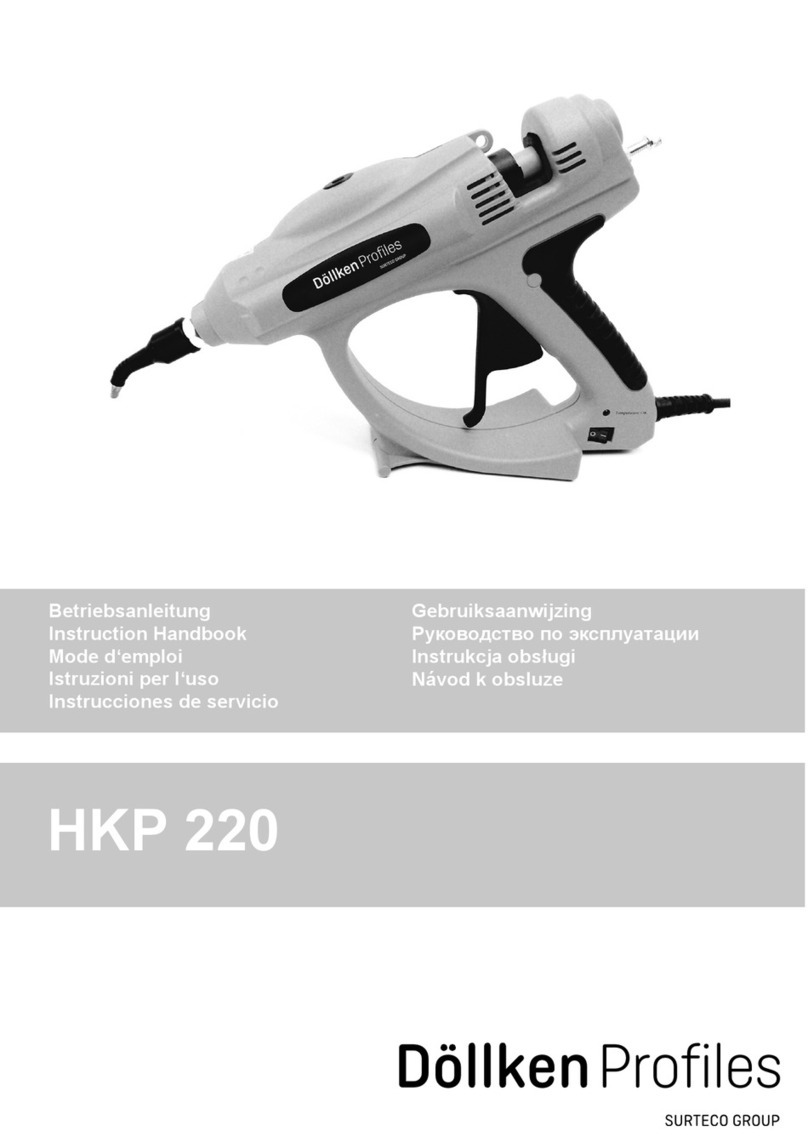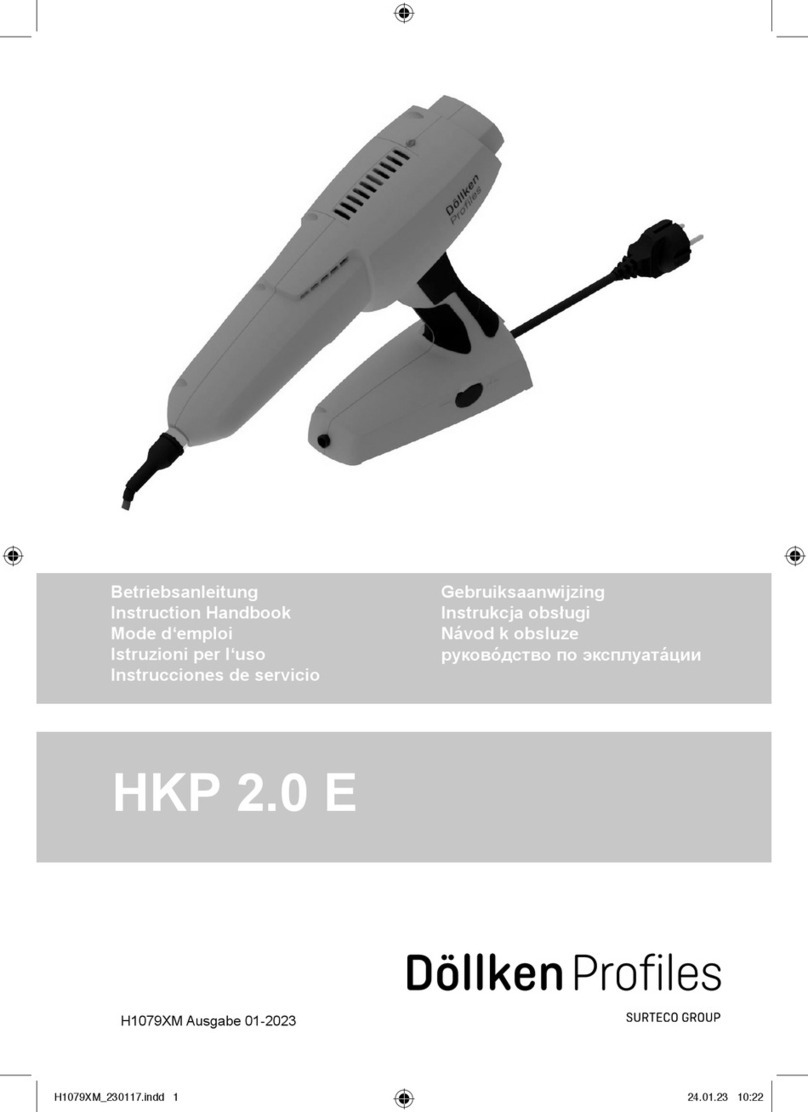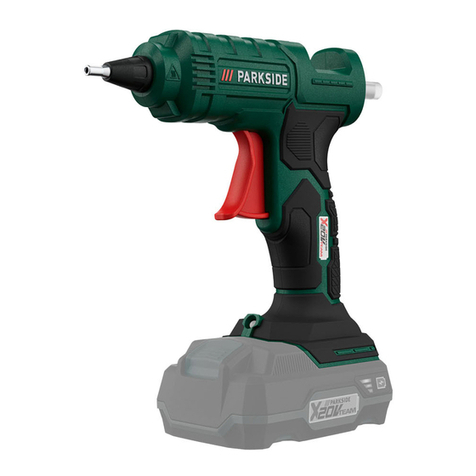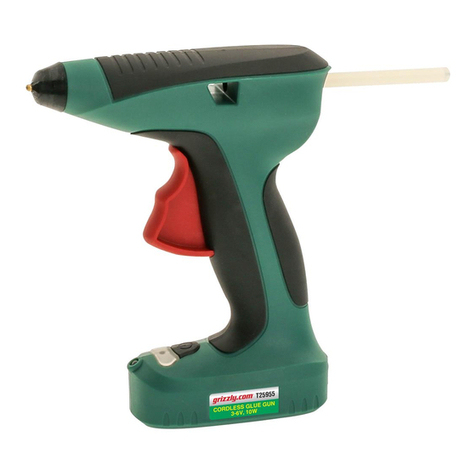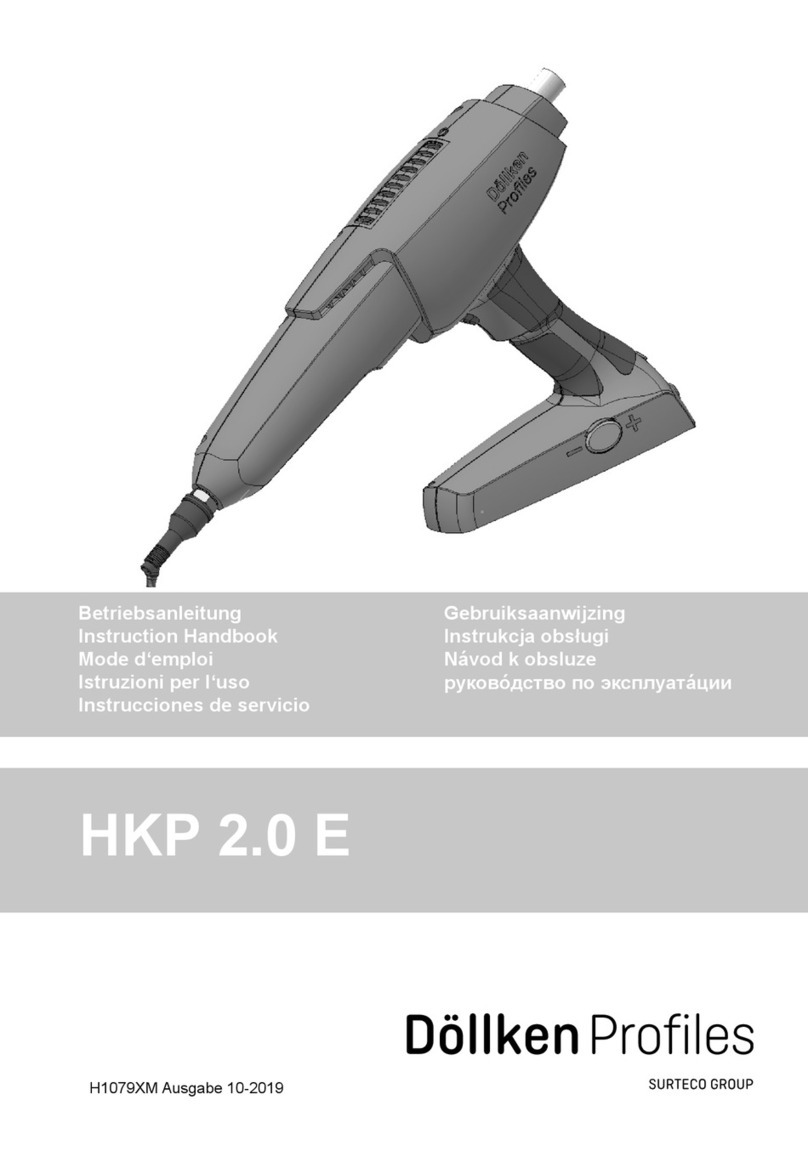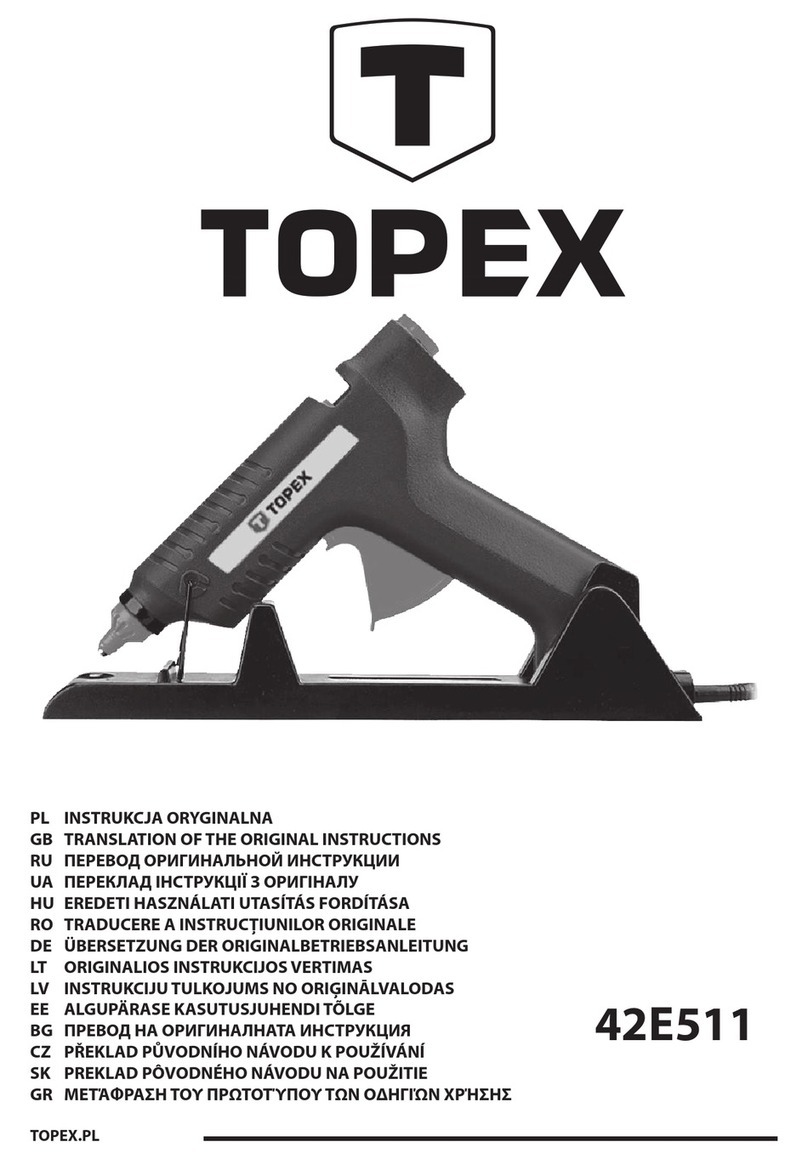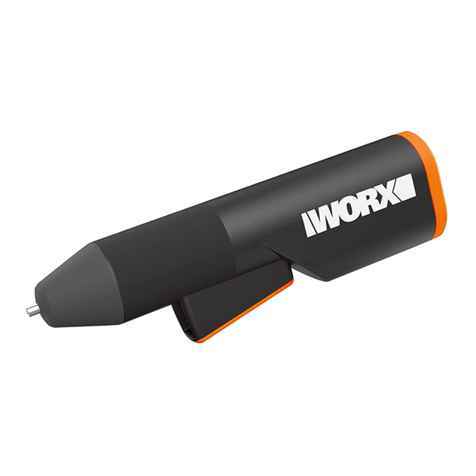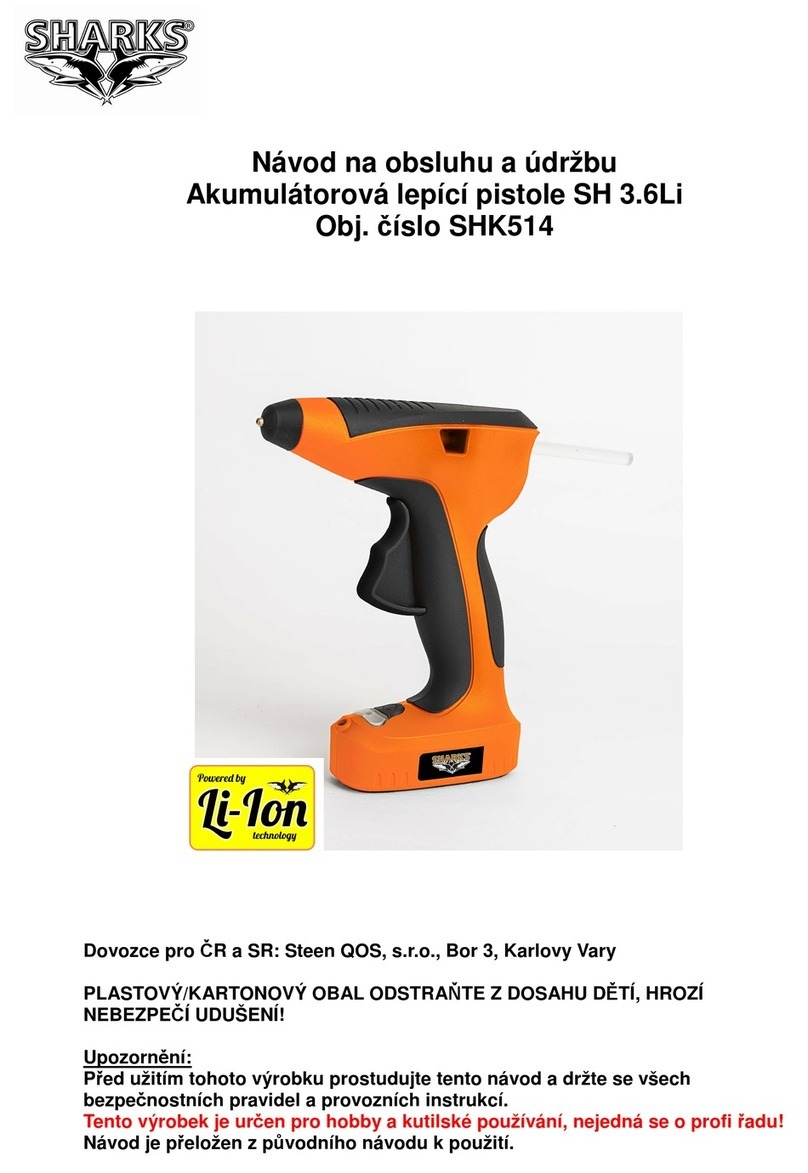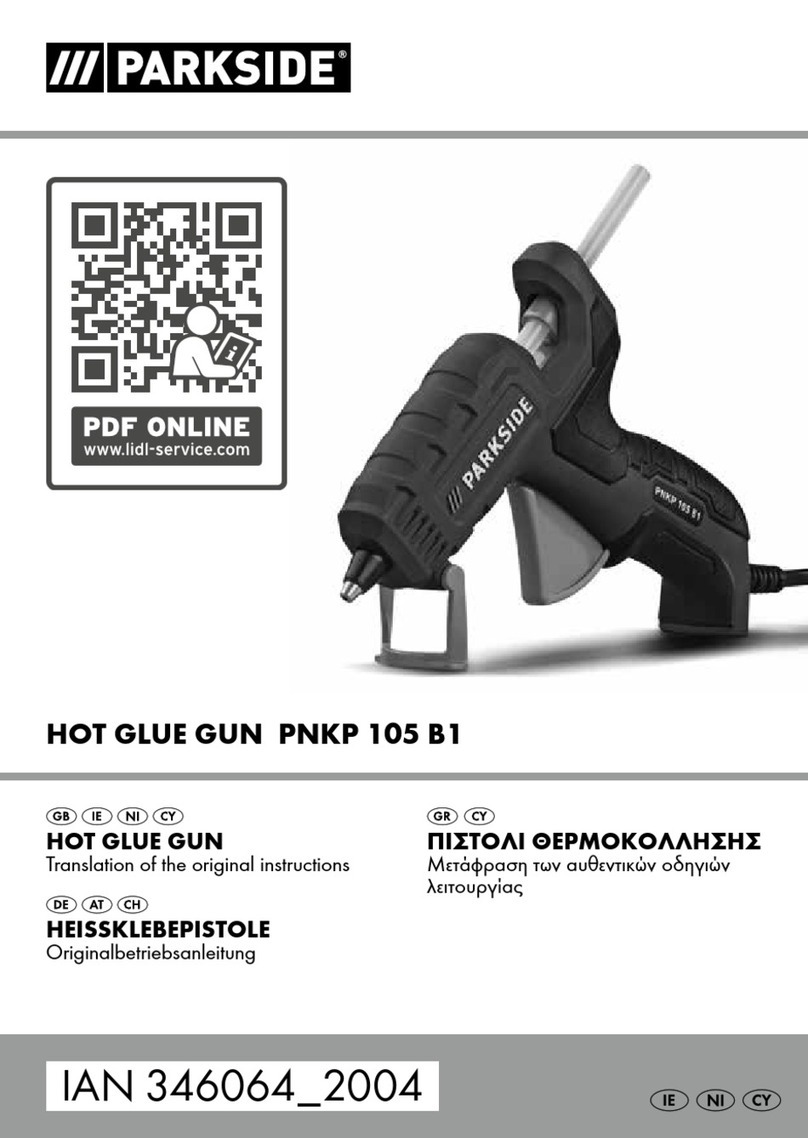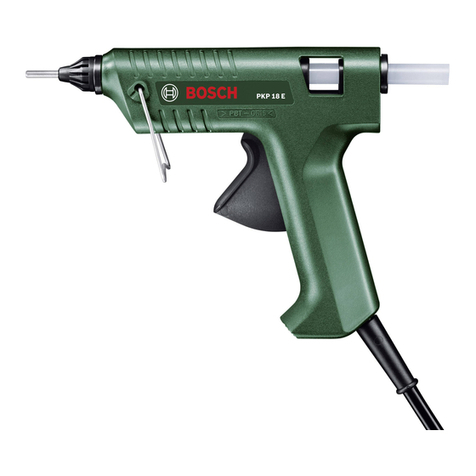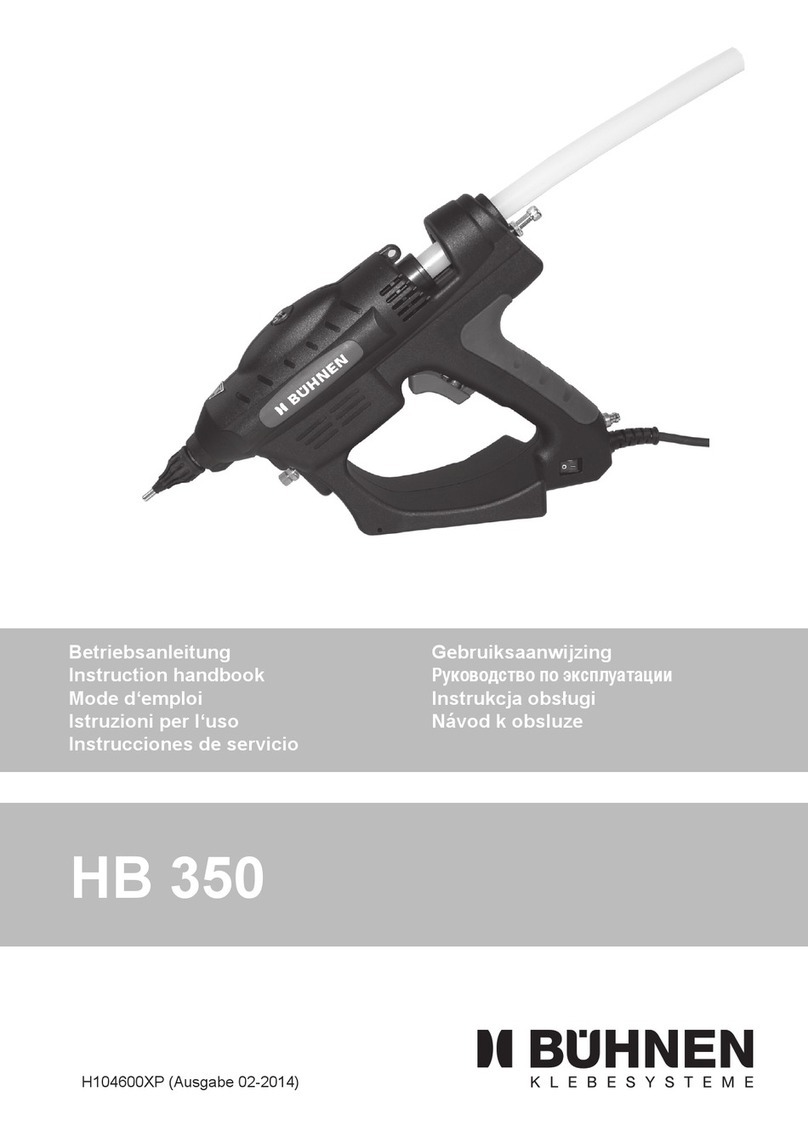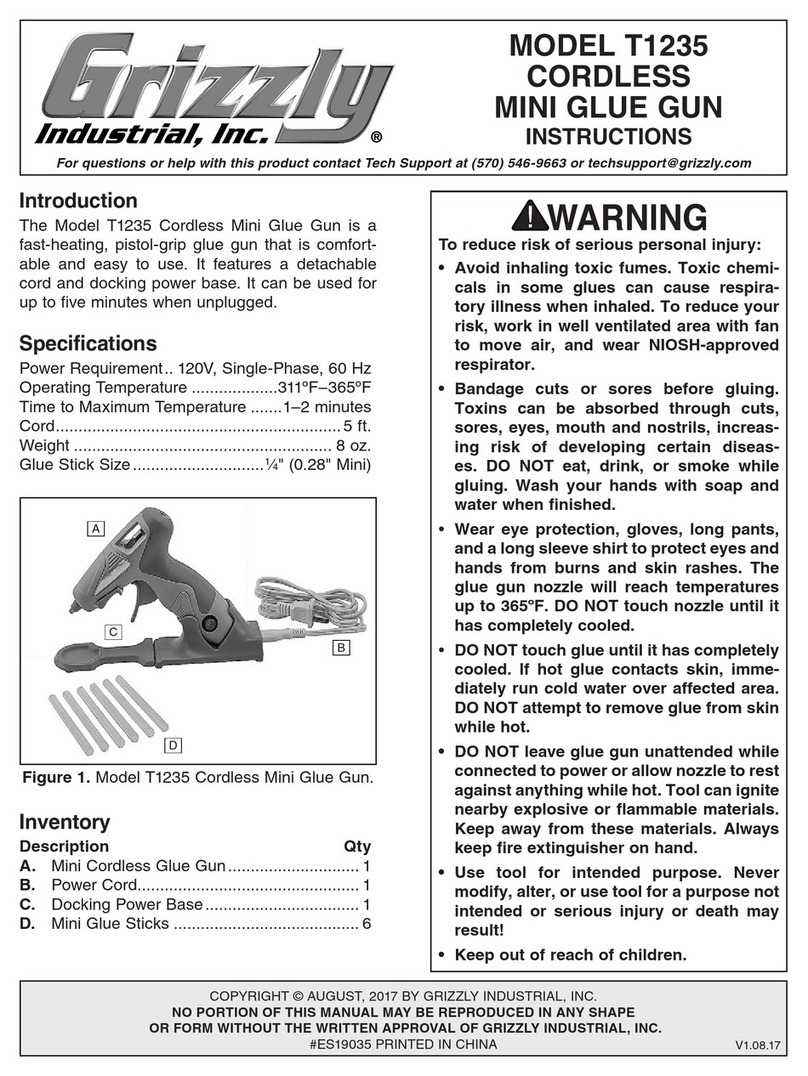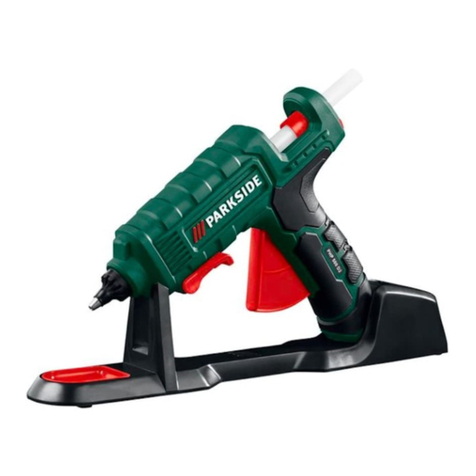
- 5 -
es
it
gb
de
p
tr
cz
el
fr
Instrucciones generales de seguridad para
herramientas eléctricas
1) Puesto de trabajo
a) Mantenga limipo y bien iluminado su puesto de
trabajo
áreas de trabajo pueden provocar accidentes.
b) No utilice la herramienta eléctrica en un entorno
con peligro de explosión, en el que se encuentren
combustibles líquidos, gases o material en polvo.
Las herramientas eléctricas producen chispas que pue-
c) Mantenga alejados a los niños y otras personas de
su puesto de trabajo al emplear la herramienta eléc-
trica.
sobre el aparato.
2) Seguridad eléctrica
a) El enchufe de la herramienta eléctrica debe corres-
ponder a la toma de corriente utilizada. No es admisi-
ble modicar el enchufe en forma alguna. No emplee
adaptadores con herramientas eléctricas dotadas de
una toma de tierra. -
dos a las respectivas tomas de corriente reducen el ries-
go de una descarga eléctrica.
b) Evite que su cuerpo toque partes conectadas a tie-
rra como tuberías, radiadores, cocinas y refrigerado-
res. El riesgo a quedar expuesto a una sacudida eléctrica
es mayor si su cuerpo tiene contacto con tierra.
c) No exponga las herramientas eléctricas a la lluvia
y evite que penetren líquidos en su interior. Existe el
peligro de recibir una descarga eléctrica si penetran cier-
tos líquidos en la herramienta eléctrica.
d) No utilice el cable de red para transportar o col-
gar la herramienta eléctrica, ni tire de él para sacar el
enchufe de la toma de corriente. Mantenga el cable
de red alejado del calor, aceite, esquinas cortantes o
piezas móviles. Los cables de red dañados o enredados
pueden provocar una descarga eléctrica.
e) Al trabajar con la herramienta eléctrica a la intem-
perie utilice solamente cables de prolongación ho-
mologados para su uso en exteriores.
exteriores reduce el riesgo de una descarga eléctrica.
f) Si fuera necesario utilizar la herramienta eléctrica
en un entorno húmedo, utilice un interruptor de pro-
tección diferencial.-
riesgo de una descarga eléctrica.
3) Seguridad de personas
a) Esté atento a lo que hace y emplee la herramien-
ta eléctrica con prudencia. No utilice la herramienta
eléctrica si estuviese cansado, ni tampoco después
de haber consumido alcohol, drogas o medicamen-
tos. El no estar atento durante el uso de una herramienta
eléctrica puede provocarle serias lesiones.
b) Utilice un equipo de protección y en todo caso
unas gafas de protección. El riesgo de lesionarse se
reduce considerablemente si, dependiendo del tipo y la
-
-
rilla antipolvo, zapatos de seguridad con suela antidesli-
zante, casco, o protectores auditivos.
c) Evite una puesta en marcha fortuita del aparato.
Asegúrese de que la herramienta eléctrica está apa-
gada antes de conectarla a la toma de corriente y/o la
batería, de desconectarla o de transportarla. Si trans-
porta la herramienta eléctrica sujetándola por el interrup-
la toma de corriente con el aparato conectado, puede dar
lugar a un accidente.
d) Retire las herramientas de ajuste o llaves jas
antes de conectar la herramienta eléctrica. Una he-
rramienta o llave colocada en una pieza rotante puede
producir lesiones al ponerse a funcionar.
e) Evite trabajar con posturas forzadas. Trabaje so-
bre una base rme y mantenga el equilibrio en todo
momento. Ello le permitirá controlar mejor la herramien-
-
perada.
f) Lleve puesta una vestimenta de trabajo adecuada.
No utilice vestimenta amplia ni joyas. Mantenga su
pelo, vestimenta y guantes alejados de las piezas
móviles. La vestimenta suelta, las joyas y el pelo largo
se pueden enganchar con las piezas en movimiento.
g) Siempre que sea posible utilizar equipos de aspi-
ración o captación de polvo, asegúrese que éstos es-
tén montados y que sean utilizados correctamente.
reducir los riesgos de aspirar polvo nocivo para la salud.
4) Trato y uso cuidadoso de herramientas eléctricas
a) No sobrecargue el aparato. Use la herramienta
prevista para el trabajo a realizar. Con la herramienta
adecuada podrá trabajar mejor y más seguro dentro del
margen de potencia indicado.
b) No utilice herramientas con un interruptor defec-
tuoso. Las herramientas que no se puedan conectar o
desconectar son peligrosas y deben hacerse reparar.
c) Saque el enchufe de la red y/o retire la batería an-
tes de realizar un ajuste en la herramienta, cambiar
de accesorio o guardar el aparato. Esta medida pre-
ventiva reduce el riesgo de conectar accidentalmente el
aparato.
d) Guarde las herramientas eléctricas fuera del alcan-
ce de los niños. No permita que las utilcen personas
que no estén familiarizadas con ellas o que no hayan
leído estas instrucciones. Las herramientas utilizadas
por personas inexpertas son peligrosas.
e) Cuide sus herramientas eléctricas con esmero.
Controle si funcionan correctamente, sin atascarse,
las partes móviles de la herramienta y si existen par-
tes rotas o deterioradas que pudieran afectar a su
funcionamiento. Si la herramienta eléctrica estuviese
defectuosa, hágala reparar antes de volver a utilizar-
la. Muchos de los accidentes se deben a aparatos con un
f) Mantenga los útiles limpios y alados. Los útiles
mantenidos correctamente se dejan guiar y controlar me-
jor.
g) Utilice las herramientas eléctricas, los accesorios,
las herramientas de inserción, etc. de acuerdo con
estas instrucciones. Considere en ello las condicio-
nes de trabajo y la tarea a realizar. El uso de herra-
mientas eléctricas para trabajos diferentes de aquellos
para los que han sido concebidas puede resultar peligro-
so.


